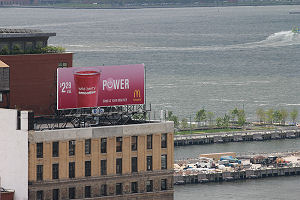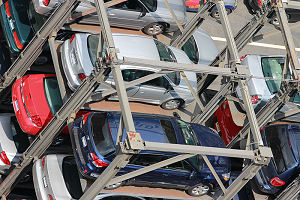

Canon EOS 60D 18 MP DSLR Review
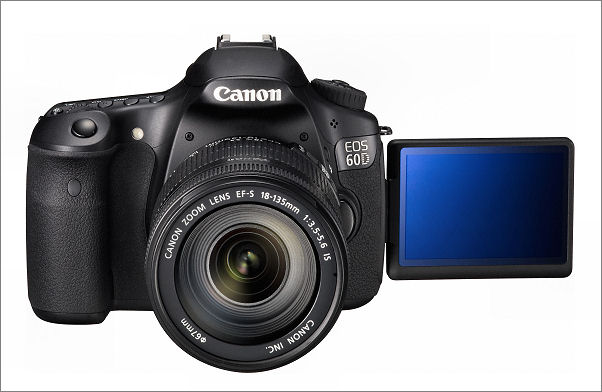
Today Canon announced the new EOS 60D DSLR (not to be confused with the Canon D60, a 6MP DSLR Canon released back in 2002). The new D60 features an 18MP APS-C sensor (very similar, if not identical, that that used in the EOs 7D and EOS T2i), a tilt and swivel LCD screen (a first in the EOS line) and full 1080p HD video with manual exposure control options.
The EOS 50D was getting a little long in the tooth since it didn't have any video capability and that's a sine qua non for any new DSLR these days. The new D60 sits comfortably between the EOS 7D at the high end and the EOS digital Rebel T2i at the low end. In terms of price and features it sits pretty much midway between the two. The main difference between the EOS 7D and EOS 60D is that the 7D has a new 19 point AF system with cross sensors at all 19 positions, while the 60D has the older 9 zone AF system (from the 50D), again with cross sensors in all 9 positions. The T2i has a similar 9 zone pattern, but only uses a cross sensor for the center AF zone. Of course the 7D has other features such as an 8fps frame rate, vertical and horizontal electronic levels.
Here's a list of some of the major features of the new Canon EOS 60D
- An 18MP sensor with 4 channel readout. This sensor appears to be very similar to that used in the EOS 7D and Digital Rebel T21, though the 7D's sensor has an 8 channel readout which speeds up operation.
- The AF system is inherited from the EOS 50D with 9 AF zones all with cross (dual axis) sensors. The 7D has a more advanced AF system with 19 cross type sensors, while the 9 point AF of the T2i has only one cross sensor (in the center)
- The ISO range is now 100-6400 plus "H" (12800). This is the same as found in the T2i and 7D.
- The maximum frame rate is 5.7 fps, between the 3.7 fps of the T2i and the 8 fps of the 7D
- The popup flash can act as a wireless flash controller, controlling up to two groups of speeedlites
- For the first time on any Canon DSLR, the EOS 60D has a tilt and swivel LCD. While this doesn't help much for conventional still photography, it should be very useful in Live View mode and when shooting video.
- Full 1080p HD video at 24/25/30 fps and the same resolution and frame rate options as both the Rebel T2i and EOS 7D. Manual exposure setting is possible and the 60D has the "movie crop" mode found in the T2i
- The LCD has a 3:2 aspect ratio and Canon's current (and excellent) anti reflection technology.
- There is a "wind" filter which can be used when recording audio along with video. The built in mic is mono, but there is a jack for a stereo mic. There is manual control over audio volume (64 steps) but it can't be changed during shooting.
- 63 zone metering as in the T2i and 7D
- The viewfinder has 96% coverage, and is similar to that of the EOS 50D (the 7D is 100%).
- The EOS 60D is no longer CF card compatible and now uses SD(HC) cards like the T2i. The 7D uses CF cards.
- Canon have finally abandoned the BP-511 battery of the 50D in favor of the LP-E6 which is used in the EOS 7D (and 5D MkII). No current EOS DSLRs no use the BP-511/512 Li-ion batteries.
- The weathersealing of the EOS 60D seems to be somewhere between that of the T2i and the EOS 7D. It's not super weather sealed, so it shouldn't be used unprotected in heavy rain, but it shouldn't quit if it sees a little drizzle
- The shutter is good for 100,000 cycles (same as the EOS 50D). Max speed is 1/8000s and sync is 1/250s (same as EOS 7D)
- There is an electronic level, but only for the horizontal axis. The 7D has both horizontal and vertical levels, the T2i has none.
- There is a position on the mode switch for video and a dedicated "start/stop" button. When not in video mode, the same button starts and stops Live View.
- The mode dial has a locking button in the center which must be pressed before rotating the dial to change modes. This makes it harder to nudge the dial and inadvertently change modes. Hopefully Canon learned their lesson with the A2, which had a similar, but notoriously fragile, mode change locking button.
- The on/off switch is directly below the mode control dial (as in the EOS 7D)
- The buffer will hold about 58 JPEGs or 16 RAW images. This is better then the T2i but not quite as good as the EOS 7D for JPEGs.
- The 4 way controller used for menu selection, AF zone selection etc. is now incorporated inside the rear QCD on the EOS 60D.
- The list price is $1099 and that's what it should initially sell for. In time the price will likely dip below the $1000 point.
...and the downsides of the 60D vs. the 50D...
- No AF microadjustment
- More plastic
- No PC socket for flash
- The "joystick" replaced by multi-axis controller integrated into QCD
Hands-on testing with a pre-production Canon EOS 60D
I was lucky enough to be able to shoot with a pre-production Canon EOS 60D in New York earlier this month. The results were fully up to the standard set by the EOS 7D (and Rebel T2i) in terms of color and noise levels. I found the 60D to handle very much like earlier EOS DSLRs. Though it's slightly smaller and lighter than the EOS 50D I didn't find the difference immediately noticeable. The button layout is a little different, they've moved the on-off switch, the commend dial now has a locking button and the multi-axis controller is now integrated in to the rear Quick Control Dial (QCD) but it didn't take more than a few minutes to get accustomed to the new layout.
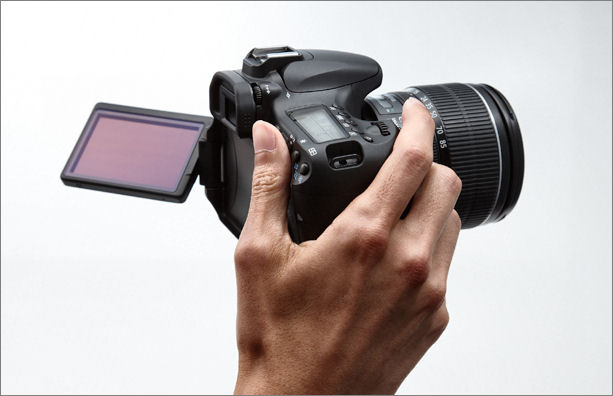
Shooting video was made quite a bit easier by the articulated LCD which allowed shooting from waist level, around corners or holding the camera overhead. It can even be swung around to face forwards if you want to shoot self-portraits! A very brief video clip shot at 1080p, 24fps can be viewed here - http://vimeo.com/14436331 (a new window will open). The audio is mainly wind noise (shot from the roof of a building). I didn't manually adjust the audio gain so the AGC probably maximized it (hence the noise)
Below are some still images shot with the pre-production (beta) EOS 60D. Click on the image for a larger version.
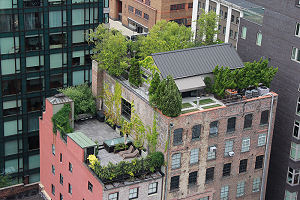
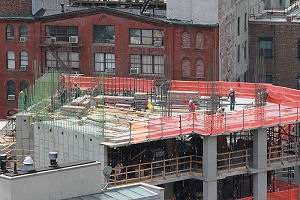
Below is a comparison on noise at ISO 400 to 12800. Noise below ISO 400 (and even at ISO 400) is not an issue. Click on the image below (~50% crops) for a larger version (100% crops).
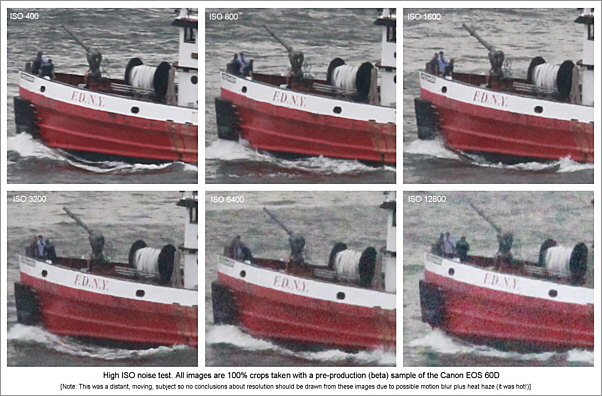
Finally here is an example of a 100% crop. The first image below shows the whole frame, while the second image shows a 100% crop (with the area it covers indicated by the yellow rectangle on the first image)

Shot with pre-production Canon EOS 60D (whole frame)
Lens: Canon EF70-200/2.8L IS II, 200mm, f8, ISO 100, 1/250s
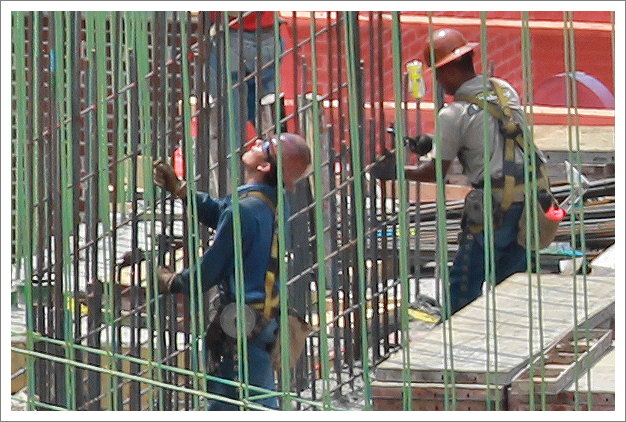
Area outlined in yellow on previous image. 100% crop. Pre-production Canon EOS 60D
Conclusions
So now, for the first time, we have three APS-C cameras which differ only in features. The intrinsic, RAW, image quality of the T2i, EOS 60D and EOS 7D are for all practical purposes the same. However the EOS 7D AF system is better than the 60D AF system which is in turn better than the Rebel T2i AF system. Similarly the EOS 7D has a higher frame rate than the EOS 60D, which is in turn faster than the Rebel T2i. I won't list all the features and custom functions, but again the EOS 7D has more than the EOS 60D, which has more than the Rebel T2i. All three shoot 1080p HD video, have a jack for an external stereo microphone and allow full manual control over ISO and exposure, though only the 60D has manual control of audio level.
In some ways the Canon EOS 60D has moved a little closer to the digital rebel line than the previous Canon EOS 50D. A few of the more "professional" features have been dropped, like AF microadjustment and PC flash connection though I suspect that the vast majority of 50D owners have never used either of these features. The SD/CF card issue is really a non issue from a practical point of view since SD cards are now fast and cheap enough that even if you have a large CF card collection it won't break the bank to buy a few SDHC cards.
Which one to chose depends on your budget. The only exception to that would be if you are mainly buying the camera to shoot video. In that case I'd go for the new EOS 60D simply because of the articulated LCD screen which does make shooting video easier. The articulating LCD screen is something I'd expect to see on most new EOS DSLRs from now on, except perhaps for the lowest priced entry level rebel.
I expect the EOS 60D to sell well and from my brief time with it (about an hour) it seems to be a camera I can certainly recommend. If you do a lot of action work (especially outdoors), the EOS 7D with it's higher frame rate, improved weathersealing and 19 AF zones might be a better choice, but for the average serious amateur the EOS 60D has just about every bell and whistle you could want.
The only think lacking is continuous AF in movie mode. Sony have just introduced two new cameras, the alpha A33 and alpha A55 which do offer continuous phase detection AF in movie mode. However to achieve this they had to use a fixed semi-reflective pellicle mirror (such as Canon used in the EOS RT film camera), plus they had to give up optical reflex viewing and use an electronic viewfinder. Perhaps Canon will do something similar in time, though I personally wouldn't be too enthusiastic about an EVF camera with no optical reflex viewing. A fixed mirror would also need some mechanism to allow for sensor cleaning unless the entire mirror box, shutter and sensor were a sealed unit.
For a mid-price DSLR that does dual duty for still and video photography, I think the EOS 60D is hard to beat right now.
